When planning a geometry formative assessment for our Early Learners (three year olds), Math Practice 5, using appropriate tools strategically, seemed especially important. Research tells us that as students understand shapes, they match, recognize, identify, and describe them in different sizes and orientations. Understanding math content is important but because we want students to have conceptual understanding of that content, the math practices are important, too. As Mike Flynn reminds us in Beyond Answers, the math practices identify behaviors, or practices, that students enact in order to understand and become proficient in mathematics.
But what tools could I strategically use as I planned this common formative assessment lesson?
The target skills for this lesson were to notice and note students matching, recognizing, naming, and even describing shapes. What strategic tools would be helpful for this formative assessment lesson? Knowing that I wanted students’ hands on shapes, and not wanting color and size to limit responses, I considered using Graham Fletchers’s subitizing cards. These cards are black shaded arrangements of shapes. Could I be flexible and use these subitizing cards as a tool for this non-subitizing lesson?
I decided to enlarge Graham’s subitizing cards picturing various arrangements using only circles, squares, and triangles. Using attribute blocks, I gathered those three shapes in different sizes, colors, and thicknesses. Each student would have a bin of shapes and a black workspace.
Here is the plan for these Early Learners.
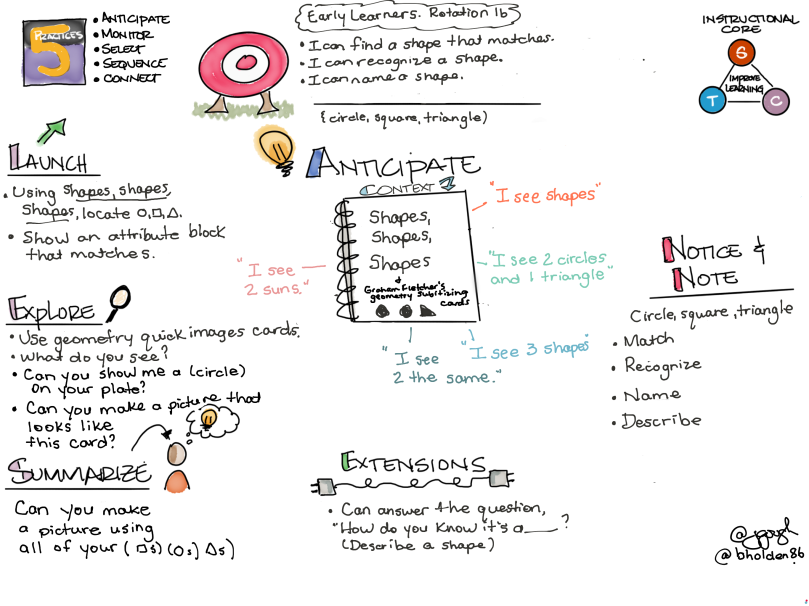
This formative assessment lesson would be my first time teaching math with these students. I would begin with Shapes, Shapes, Shapes, by Tana Hoban. Showing only a few of the pages in this big book, I would ask, “What shapes do you see? Can you show me where they are? Could you find a (triangle)? How did you know it was a (triangle)?” Hearing students’ use of geometric language would inform subitizing card choices during the next part of the plan.
During this first part of the lesson, various students recognized and/or named and/or described the shapes. Wow! We can never be sure what students know unless we ask!
Beginning with one shape on per card, and moving to cards with combinations of two shapes, I asked students to show me the shapes on their workspace.
As they worked, we asked,
“What shapes did you use?”
“How do you know that’s a (square)?
“How many (circles) did you use?”
“What shape is beside the (triangle)?”
As they worked, we noticed,
With one look, could they remember what to show on their workspaces?
Did they look back and forth to be sure of the arrangments?
Did size or color matter?
Did they place shapes beside each other?
Did their arrangements match left to right with the subitizing card?
When it was time to clear workspaces and be ready to consider the next subitizing card, I swiped a xylophone. That would always be our signal to “clear your workspace”.
Here are some photos of students replicating the subitizing cards.
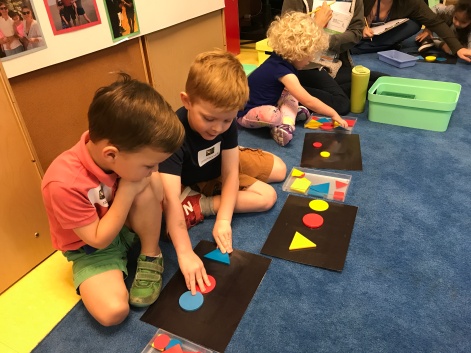
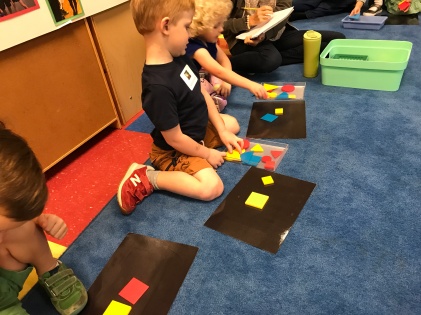
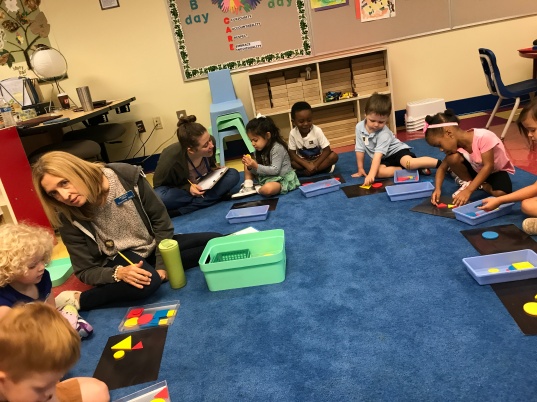
This subitizing card provided some interesting conversation.

After showing this card, some students thought they couldn’t match it because they didn’t have a “diamond”. This student said she just put these shapes down, and then she turned one. In the photo, the student going to show a friend how she did it!
After recreating the subitizing cards, students were challenged to create pictures using only triangles and later, to use only squares. Here are some results!


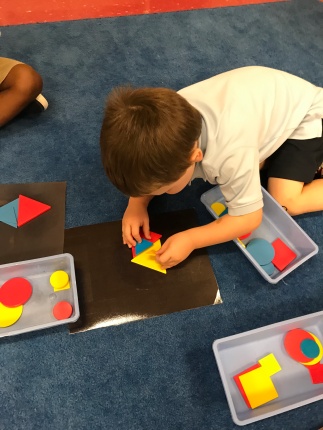
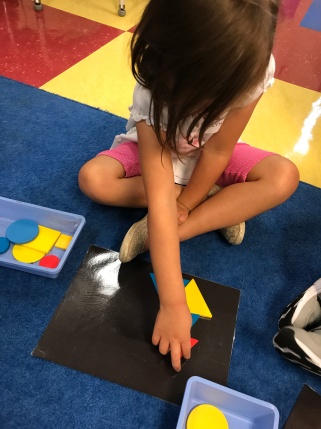
Reflections
The target goal for the lesson was to notice and note students’ abilities to match, recognize, name, and/or describe circles, squares, and triangles. There were opportunities with this plan to recognize all of that. Using the subitizing cards promoted the flexibility of responses for which I had hoped. The cards and materials felt “just right” manageability wise. Whew!
There are many more experiences and opportunities for these three year old mathematicians. as they think about shapes and positions. This open-ended response lesson gave a first glimpse of what our students know and understand about shapes as we continue to nurture and support our math community of learners.